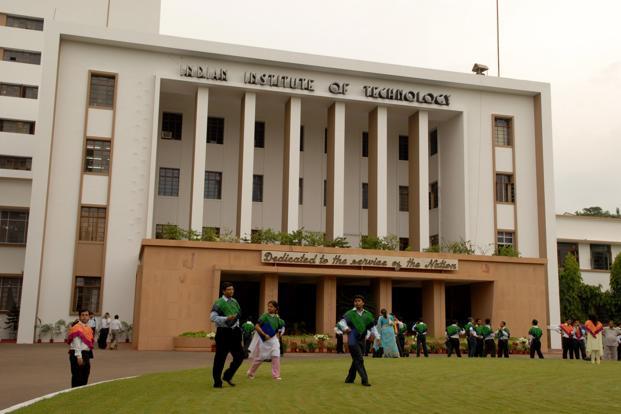
Photo: Indranil Bhoumik/Mint
Fees for students studying in publicly funded higher education institutions such as the Indian Institutes of Technology (IITs) and central universities could more than double, with budget 2016 proposing a new funding pattern for the elite schools.
The budget proposed setting up a Higher Education Financing Agency (HEFA), a quasi-sovereign body which will tap bond markets and then lend the proceeds to educational institutions to fund future expansion and upgrade plans. HEFA has been allocated an initial Rs.1,000 crore.
The government’s plan is to fund the operational expenditure of educational institutions, but have them fund their capital expenditure through such borrowings. Currently, the government funds the capital expenditure as well.
Since they will now end up borrowing money, albeit at a rate lower than the market rate, to fund capital expenditure, educational institutions may end up raising tuition fees.
“Basically, this means for higher education, most students, other than those from weak social and economic backgrounds, have to pay more,” a senior finance ministry official said, speaking on condition of anonymity.
“Let’s say IIT Delhi wants to expand its laboratory facilities. This agency (HEFA) can lend Rs.100 crore at a cheaper interest rate. We have done the calculations and this borrowing will mean an IIT-Delhi student has to pay around Rs.2 lakh per annum against the Rs.95,000 he pays at present,” the official added.
Proposing the creation of HEFA in his third budget on 29 February, Jaitley said, “HEFA will be a not-for-profit organization that will leverage funds from the market and supplement them with donations and CSR (corporate social responsibility) funds (from companies). These funds will be used to finance improvement in infrastructure in our top institutions and will be serviced through internal accruals.”
It wasn’t immediately clear whether the government will mandate that all donations from alumni be made only towards HEFA.
Human resource development minister Smriti Irani on Friday said the Rs.1,000 crore corpus thus created will be “equity money”, meaning more can be raised in the form of debt from different sources.
Irani said HEFA funds will be used only for public institutions although the finance ministry official maintains that even private institutions can borrow from this agency at a cheaper interest rate.
“HEFA will be a financing agency like Nabard (National Bank for Agriculture and Rural Development) and NHB (National Housing Bank). It has a capital base ofRs.1,000 crore and then it can borrow from the market. It is a quasi-sovereign agency which will borrow close to the gilt rate which is 8% for 10 years at present. So it will borrow at 8-8.5% and lend at 9%. Today if you go to an education institution and ask them at what rate you borrow, they will tell you 12-14%,” the finance ministry official said.
Successive governments have mulled over increasing fees at government-run institutions and subsidizing only students from underprivileged backgrounds.
For example, an IIT spends around Rs.250,000 a year on a student but charges a tuition of just Rs.90,000.
At Jawaharlal Nehru University, a central university in New Delhi, the tuition fee is less than Rs.300 per annum.
In contrast, SRM University, a private deemed university in Tamil Nadu, charges between Rs.90,000 and Rs.104,000 per year at the undergraduate level.
At VIT University, another leading private institution in Tamil Nadu, the tuition fee it is Rs.1.55 lakh per annum at the B-Tech level.
A fee hike has been on the table for months, said an administrator at an IIT who asked not to be identified. “During the last IIT council meeting in October, there was no decision on it.”
The council is the apex decision making body for the engineering schools.
The administrator said none of the schools knew about HEFA.
“The government has not told us about the new financing agency and how it will benefit individual institutions like IIT or IIIT (Indian Institute of Information Technology) or any public institutions.”
He added that a two- or three-fold hike in fees will send out a wrong signal.
“Maybe it can be done in a staggered manner.”
HEFA is a step in the right direction as it’s an alternative funding mechanism for institutions where government funding is low, said Narayanan Ramaswamy, a partner in the education practice at consulting firm KPMG.
Ashwini Swain, director at CUTS Institute for Regulation and Competition, a New Delhi-based policy think-tank, said raising the fee at government-run institutions to a level charged at private schools will have several implications.
“One, since education in India is not job-linked, how will the state justify the high fees to students? In Europe, citizens get unemployment allowance till the time they get a job. Can India do this? The answer is no,” he said.
The second risk of introducing a differential price structure in government-run educational institutions is creating another divide on campuses.
“Caste divide in campuses is strong now (because of reservation or affirmative action) and a differential fee regime will lead to a class division and that’s bad for education as a whole,” Swain added.
[“Source-Livemint”]




